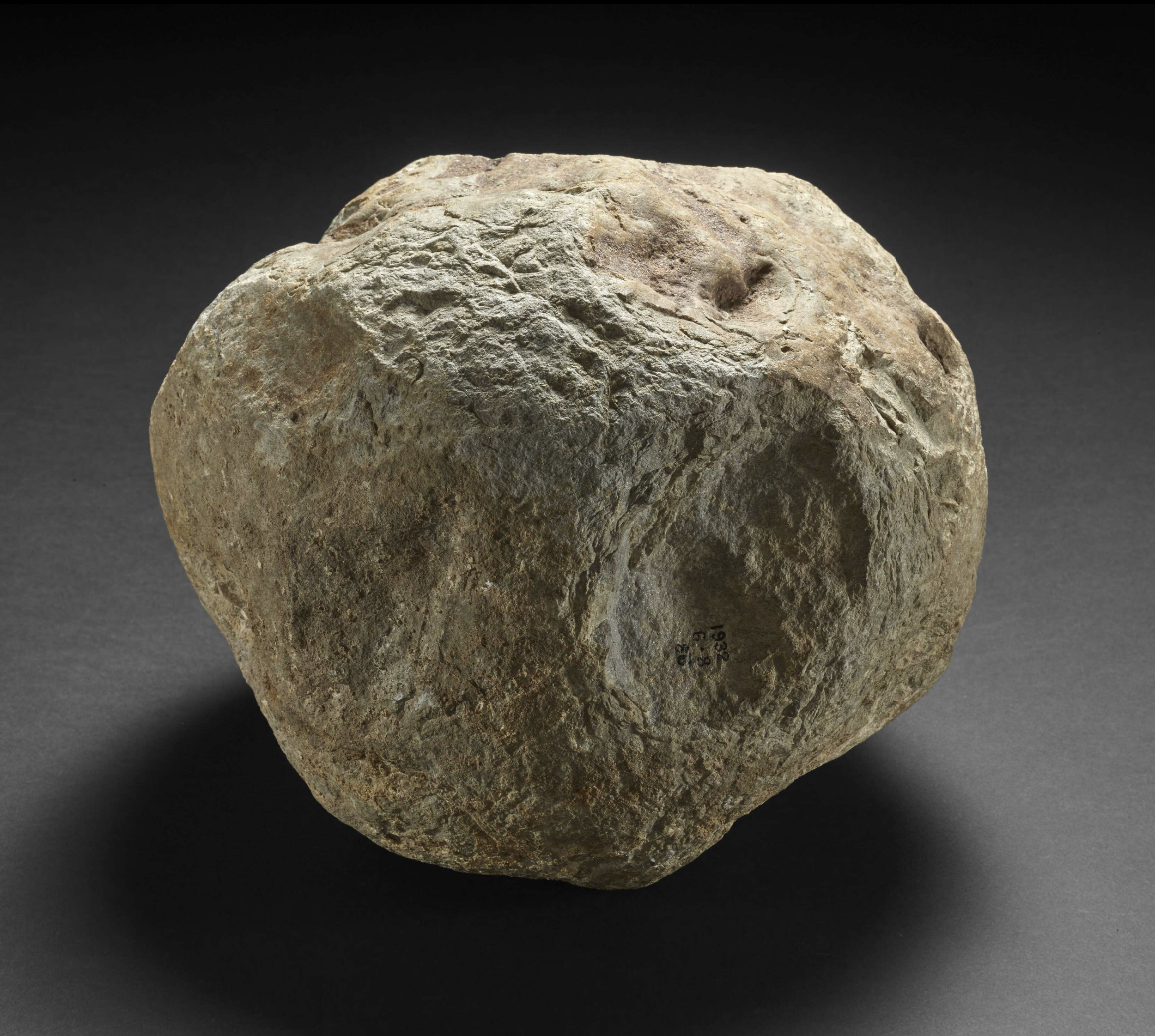HAMMER STONE
Mesolithic / Neolithic / Bronze Age / Iron Age,
circa 5400 B.C. - 43 A.D.
Likely buff grey flint or calcified sarsen stone
13 cm wide
14 cm long
Provenance:
Victor Brox Collection (1940 - 2023), UK
£2, 500

‘Didn’t this man ... when he picked up a stone to give it a shape useful to his needs ... open the way for all sculptors and architects to come?’
- Jacques Boucher de Perthes, Antiquites Celtiques et Antediluviennes, Vol. 1 (1847).
Hammer stones were carved loosely in the round from hard and heavy rocks, before their surface was ‘pecked’ to create a myriad of undulations. This may have been intended to increase the friction the stone could generate when it was used as a grinding stone. However, it is believed that the main purpose of a hammer stone was to make the basic shape of a flint implement, before its edges were more delicately ‘knapped’ with smaller flints. Large hammer stones of this type are rare, and were believed to have been used from the Ice Age until well into the Iron Age. Various examples exist in private collections, such as that of Lord MacAlpine and also various museums across the world.
Related literature
MacGregor, A., (ed.) Antiquities from Europe and the Near East in the Collection of Lord MacAlpine of West Green, Oxford, 1987, item 6.23.
Boucher de Perthes, J. Antiquites Celtiques et Antediluviennes, Vol. 1, 1847.

Hammer Stone, Neolithic / Bronze Age / Iron Age (circa 4300 B.C. - 43 A.D.) British Museum, UK (1932,0608.86). Found at Stonehenge, Amesbury, Wiltshire, UK.

Hammer Stone, Neolithic / Bronze Age (4000BC - 800BC), Sarsen stone, British Museum, London (1964,0206.7398). Found Staines, Surrey

Hammer stone, Neolithic / Bronze Age / Iron Age (circa 4300 B.C. - 43 A.D.) British Museum, UK (Sturge.2212). Found at Hetton, North Yorkshire, UK.

Neolithic flint axe whose shape would have been initially hewn by a hammer stone
